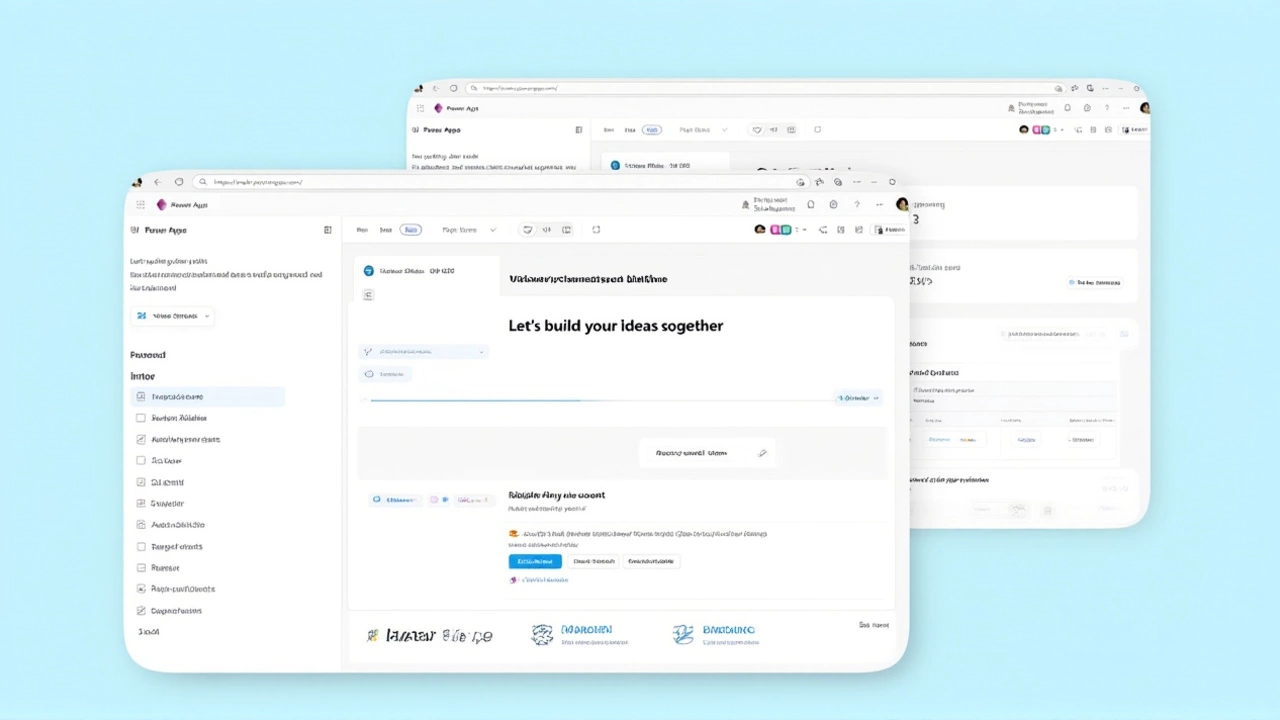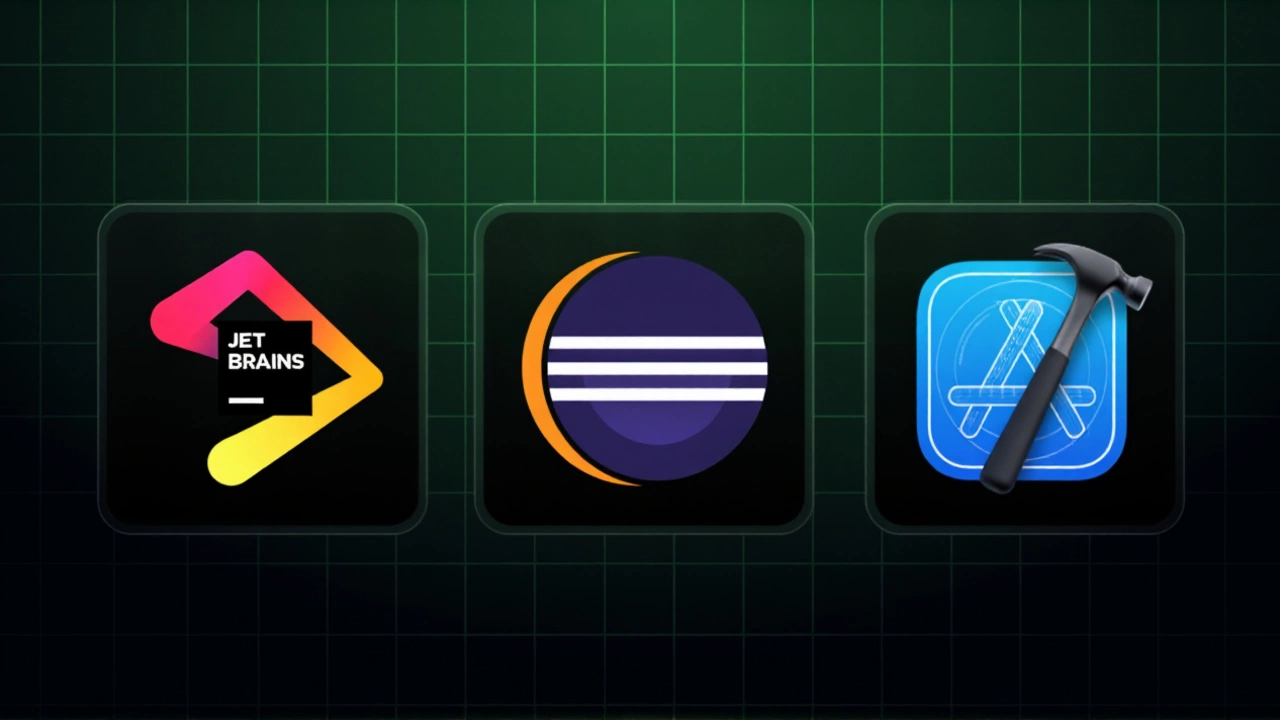
On November 18, 2025, Microsoft didn’t just update its low-code platform — it rewrote the rules of software creation. The company’s blog post, "Inside the new Power Apps: The future of app development," revealed a seismic shift: Power Apps now runs on a new AI backbone, deeply fused with Microsoft 365 Copilot. No longer just a tool for dragging and dropping buttons, Power Apps can now listen, think, and build alongside you — using agents that understand your business data, your workflows, and even your typos.
The AI That Builds With You
Here’s the twist: you don’t need to code anymore. Not even a line.
Meet the Power Apps Model Context Protocol (MCP) Server. It’s the invisible engine that lets Copilot agents — like Researcher and Analyst — step inside your apps and work directly with your Dataverse tables, Excel sheets, and SharePoint lists. Want to automate form filling? The agent does it. Need to visualize sales trends without switching to Power BI? Instant visuals appear with a whisper. Paste a table from an email? Smart Paste maps it to the right fields automatically.
It’s not magic. It’s context. The agents don’t guess. They learn from your app’s structure, your data relationships, and even your past decisions. And you’re still in control. The new Agent Feed acts like a live journal — showing you what each AI assistant is doing, why, and letting you approve, tweak, or shut it down. No more black boxes.
Generative Pages, Now Live
Back in June 2025, Microsoft quietly rolled out Generative pages powered by GPT-5 — and now they’re generally available. This means you can type, "Build me an app to track rental property maintenance," and watch as Power Apps generates a full canvas app with forms, data tables, and even approval workflows. No designer skills needed. Just describe the problem.
That’s thanks to Plan Designer and App Agent, two new tools that turn natural language into functional applications. One user at a midsize logistics firm in Chicago told me, "I described our warehouse inventory process to Copilot in a voice note. Ten minutes later, I had an app that tracked shipments, flagged delays, and emailed drivers. I didn’t touch a single control."
And it’s not just for makers. End users get the same superpowers. Ask your app, "Show me all orders over $10,000 from last quarter," and it’ll surface the data — no dashboard hunting required.
Real-World Impact: From Forms to Fleet
Behind the flashy features are quiet, massive efficiency wins.
- Real-time Form Suggestions cut data entry time by up to 40% in early tests — no more scrolling through dropdowns.
- Instant Visuals eliminate the need to export data to Power BI, saving teams an average of 3.2 hours per week.
- Agent-Ready Apps now handle routine tasks like invoice approvals, employee onboarding, and IT ticket routing — freeing up staff for higher-value work.
Administrators aren’t left in the dark. New inventory and usage reporting gives IT teams instant visibility into which apps are being used, by whom, and how often. One Fortune 500 company reported a 68% drop in shadow IT after deploying these reports — they finally knew what was running in their environment.
What’s Changing for Developers
Even seasoned coders benefit. Microsoft has opened the floodgates: you can now build Power Apps from any development environment — Visual Studio, GitHub Codespaces, even a Linux terminal — and deploy with full Microsoft Entra authentication. That’s a game-changer for enterprises with strict DevOps pipelines.
And the connector ecosystem? It’s now over 1,400. That means your app can talk to Salesforce, SAP, Oracle, or even a custom legacy system — all governed by centralized security policies. No more patchwork integrations.
Perhaps most surprising: the platform now auto-updates apps to modern defaults. Responsive layouts? Offline mode? New Fluent UI controls? They’re all turned on by default. No more legacy-looking apps.

What’s Next: December 10 and Beyond
The big moment arrives December 10, 2025, when the unified Copilot chat experience rolls out in preview for model-driven apps. Imagine typing a question into a field — not just to filter data, but to ask, "Why did sales drop in Texas?" — and getting a narrative summary with charts, root-cause analysis, and recommended actions.
Meanwhile, Power Pages is getting AI-powered web agents that handle customer service over WhatsApp, Teams, and email. And Copilot Studio now lets you upgrade simple bots into full custom agents with new conversational channels.
One thing’s clear: Microsoft isn’t just improving Power Apps. It’s turning every employee into a developer — and every business process into something that can be improved by AI.
Background: The Evolution of Low-Code
Power Apps launched in 2016 as a simple drag-and-drop tool for Excel-savvy users. By 2020, it was handling enterprise workflows for hospitals and schools. But until now, AI was an add-on — a sidebar feature.
The 2025 release wave (April–September) introduced Generative pages and Enhanced Component Properties (ECPs), which let makers customize controls with AI-driven properties. But the real leap came with the October 2025–March 2026 Wave 2 update, which embeds AI into the platform’s DNA.
And remember the old pain point? Changing encryption keys used to shut down environments for up to four days. Now? It’s near-instant. That’s the kind of quiet reliability that enterprise customers notice — and appreciate.
Frequently Asked Questions
How does this affect non-technical employees?
Non-technical staff can now create or modify business apps using natural language — no training required. A warehouse supervisor in Ohio built a shift scheduling tool by describing it to Copilot. The system auto-generated forms, calendar views, and SMS alerts for late arrivals. This reduces reliance on IT and empowers frontline workers to solve their own problems.
What’s the difference between Power Apps and traditional coding?
Traditional coding requires writing logic, debugging syntax, and managing deployments. Power Apps with Copilot lets you describe what you want — and the AI handles the rest. You focus on the business problem, not the code. It’s like going from building a car from scratch to telling a mechanic, "I need a sedan that handles snow."
When will these features be available to all users?
The unified Copilot chat experience in model-driven apps begins preview on December 10, 2025, with full rollout expected by March 2026. Generative pages and ECPs are already generally available as of June 2025. All features are rolled out gradually based on tenant settings and licensing tiers.
Can I still build apps the old way?
Absolutely. The new AI tools are optional enhancements. Developers can still use traditional canvas and model-driven app methods, and all legacy apps remain fully functional. Microsoft is adding intelligence, not replacing the foundation. The platform now supports both approaches side by side.
Is my data safe with AI agents accessing it?
Yes. All agent interactions are governed by Microsoft Entra ID permissions and data loss prevention (DLP) policies. Agents only access data your role allows. The Agent Feed logs every action, and admins can audit or restrict agent behavior. Microsoft emphasizes that AI doesn’t override security — it enforces it.
What if the AI suggests something wrong?
You’re always in control. The Agent Feed shows every suggestion with a confidence score. You can reject, edit, or train the agent by correcting its output — and it learns from your feedback. One finance team in Toronto improved accuracy by 73% in three weeks by simply flagging incorrect form suggestions.





